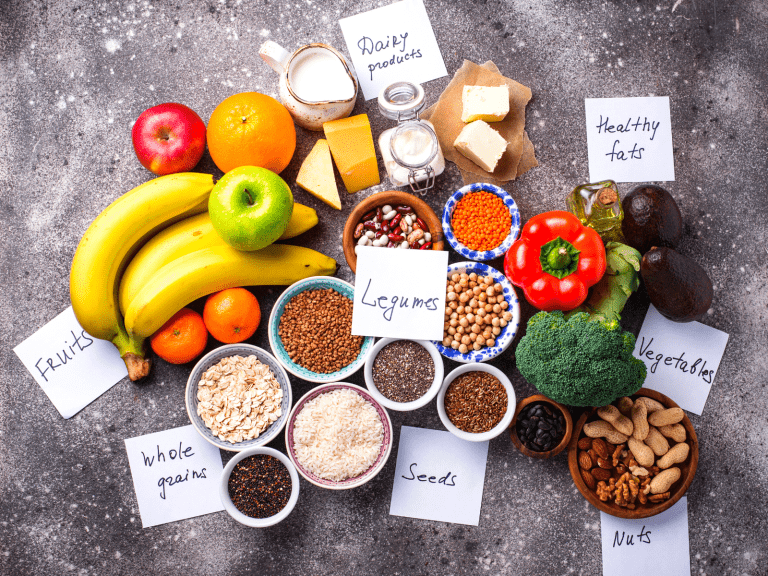Lacto vegetarianism is a dietary lifestyle that is gaining popularity among people who are health-conscious, environmentally aware, or compassionate towards animals. Lacto vegetarianism is a vegetarian diet that includes dairy products but excludes animal flesh, seafood, and eggs.
The lacto vegetarian diet provides various health benefits, environmental benefits, ethical benefits, and practical benefits. In this blog post, we will explore the benefits of a lacto vegetarian diet and provide delicious lacto vegetarian recipes that are easy to cook.
Health Benefits of Lacto Vegetarianism
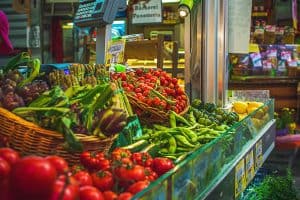
Research has shown that lacto vegetarianism can help reduce the risk of chronic diseases such as heart disease, cancer, and type 2 diabetes. A lacto vegetarian diet is rich in vegetables, fruits, whole grains, nuts, and legumes, which are all nutrient-dense foods that are high in fiber, vitamins, minerals, and antioxidants. These nutrients can help improve digestive health, lower the risk of obesity, and promote better bone health.
Adding lacto vegetarian foods to your diet can help you get the protein you need without consuming meat or eggs. Protein is an essential nutrient that plays a crucial role in building and repairing tissues, maintaining healthy muscles, and producing enzymes and hormones. Some of the protein-rich foods that lacto vegetarians can include in their diet are dairy products, black beans, lentils, quinoa, nuts, and tofu.
Lacto vegetarianism has also been linked to a lower risk of heart disease. Heart disease is a leading cause of death worldwide, and research has shown that consuming animal products is associated with a higher risk of heart disease. A lacto vegetarian diet, which is low in saturated fat and cholesterol, can help lower blood pressure, reduce inflammation, and improve blood lipid levels, all of which contribute to a healthier heart.
Environmental Benefits of Lacto Vegetarianism
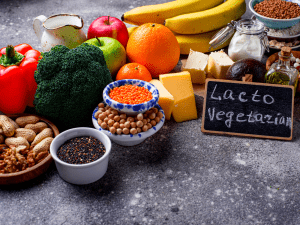
Lacto vegetarianism can help reduce your carbon footprint and promote sustainability. Animal agriculture is a major contributor to greenhouse gas emissions, deforestation, and water pollution. By reducing the consumption of animal products, lacto vegetarians can help preserve biodiversity, conserve water, and reduce greenhouse gas emissions.
Lacto vegetarians can also contribute to the reduction of antibiotic resistance. The overuse of antibiotics in animal agriculture has led to the emergence of antibiotic-resistant bacteria, which pose a significant threat to public health. By consuming dairy products from cows that are not given antibiotics, lacto vegetarians can help reduce the risk of antibiotic resistance.
Ethical Benefits of Lacto Vegetarianism
Lacto vegetarianism is a compassionate lifestyle that promotes the humane treatment of animals. Animal agriculture is associated with the exploitation and suffering of animals, including confinement, mutilation, and slaughter. By choosing a lacto vegetarian diet, you are contributing to the reduction of animal suffering and promoting animal welfare.
Practical Benefits of Lacto Vegetarianism
Lacto vegetarianism is a practical and accessible lifestyle that can be adapted to different cultural cuisines. There are many lacto vegetarian recipes that are easy to prepare, affordable, and delicious. Here are a few recipes that you can try:
Sweet Potato French Toast
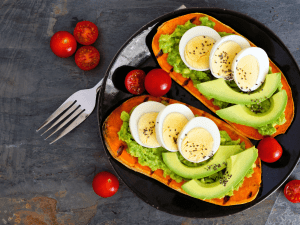
Ingredients:
- 1 medium sweet potato, peeled and grated
- 1/2 cup cream cheese
- 1/2 cup Greek yogurt
- 1/4 cup maple syrup
- 1/2 tsp cinnamon
- 6 slices of bread
- Butter or oil for frying
Instructions:
- In a mixing bowl, combine the grated sweet potato, cream cheese, Greek yogurt, maple syrup, and cinnamon.
- Spread the mixture onto one side of each slice of bread.
- Heat a non-stick skillet over medium heat Add a small amount of butter or oil to the skillet.
- Dip the bread into egg whites and place it into the skillet, with the sweet potato mixture side facing up.
- Fry the bread until it is golden brown on both sides.
- Serve with additional maple syrup, if desired.
Black Bean and Bell Pepper Bowl
Ingredients:
- 1 can black beans, drained and rinsed
- 1 red bell pepper, diced
- 1 yellow bell pepper, diced
- 1 avocado, diced
- 1/4 cup sour cream
- 1/4 cup cottage cheese
- Salt and pepper, to taste
Instructions:
- In a large mixing bowl, combine the black beans, red and yellow bell peppers, and avocado.
- In a separate bowl, mix together the sour cream and cottage cheese until smooth.
- Season the mixture with salt and pepper, to taste.
- Pour the sour cream mixture over the black bean and pepper mixture.
- Toss gently to combine.
- Serve in bowls.
Gluten-Free Pizza with Tofu and Spinach
Ingredients:
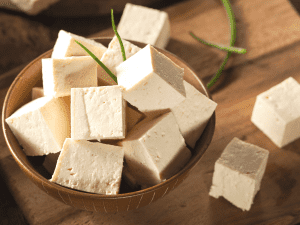
- 1 gluten-free pizza crust
- 1/2 cup tomato sauce
- 1/2 cup crumbled tofu
- 1 cup spinach leaves
- 1/2 cup shredded mozzarella cheese
- 1/2 tsp garlic powder
- 1/2 tsp salt
Instructions:
- Preheat the oven to 375°F (190°C).
- Spread the tomato sauce evenly over the pizza crust.
- Sprinkle the crumbled tofu over the sauce.
- Layer the spinach leaves on top of the tofu.
- Sprinkle the shredded mozzarella cheese over the spinach.
- Season with garlic powder and salt.
- Bake the pizza for 15-20 minutes, or until the crust is crispy and the cheese is melted.
- Slice and serve.
Ancient Vegetarianism: A Historical Perspective
Throughout history, various cultures around the world have embraced vegetarianism and its different forms, including veganism, lacto-vegetarianism, and ovo-vegetarianism. The roots of vegetarianism can be traced back to ancient times when many peoples opted for a fleshless diet. This dietary choice wasn’t solely driven by health concerns but often had ethical and cultural significance.
The ancient vegetarian societies did not consume dairy products to the extent that strict lacto-vegetarians do today. However, their diets were primarily plant-based, reflecting their commitment to living in harmony with the environment and reducing the negative impact of food production on the world around them.
Delicious Ancient Vegetarian Recipes
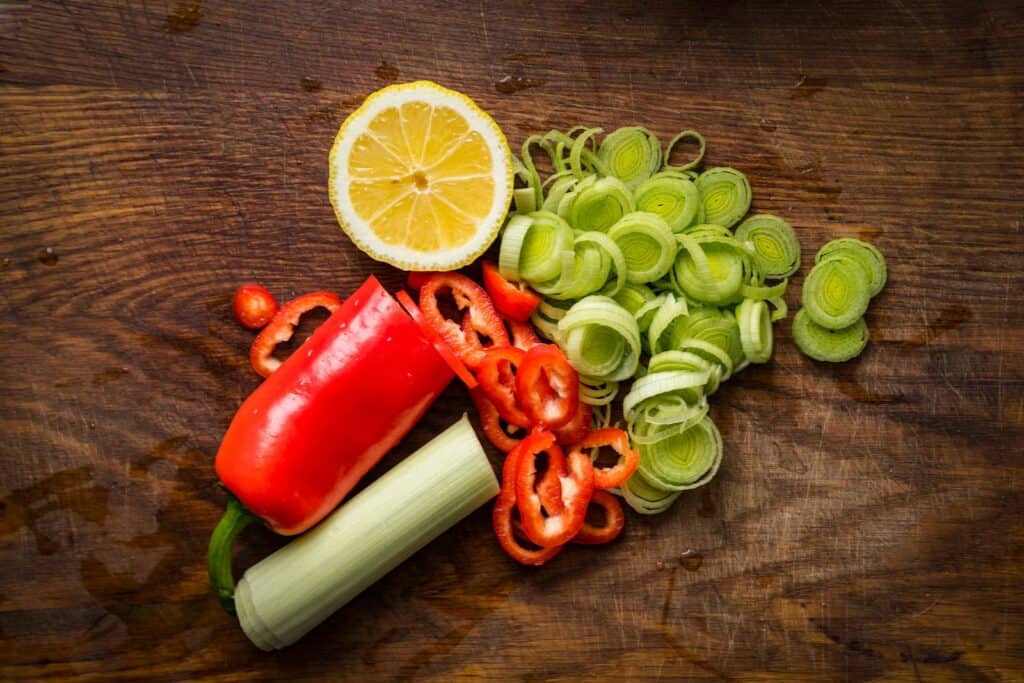
Exploring the culinary history of vegetarianism reveals a rich tapestry of flavors and ingredients. Ancient recipes showcased the creativity of those who chose not to eat flesh. These recipes often incorporated locally available plant-based foods and were indicative of the times and regions in which they were developed.
In ancient cooking, where dairy was consumed, milk products played a significant role in adding depth and richness to recipes. These recipes have stood the test of time, offering a glimpse into the diverse world of ancient vegetarian cuisine. Today, they continue to inspire modern cooks looking for sustainable and ethical ways to eat.
Vegetarianism Through the Ages: Exploring Its Historical Roots
The history of vegetarianism is a journey through time, reflecting the evolving perspectives of different societies on food, ethics, and the environment. From the early adopters of vegetarianism in ancient civilizations to the present-day environmental vegetarianism movement, the world has witnessed a shift in dietary choices and philosophies.
Over centuries, people have embraced vegetarianism for various reasons, including health, ethics, and environmental concerns. This journey has given rise to different forms of vegetarianism, such as lacto-vegetarianism and veganism, each with its unique set of principles and beliefs. Understanding this history helps us appreciate how the choices we make about what we eat can have a profound impact on our well-being and the world we inhabit.
Embracing Plant-Powered Living: The Vegan Lifestyle Unveiled
The term “vegan” has evolved into more than just a dietary choice; it has become a lifestyle encompassing a profound commitment to plant-powered living. Veganism transcends the avoidance of animal flesh, including not only flesh-eating but also abstaining from products derived from animals, such as eggs and dairy. This lifestyle choice is rooted in ethical considerations, environmental consciousness, and a deep-seated compassion for all living beings.
Vegans strive to minimize their ecological footprint, opting for plant-based alternatives in every aspect of life, from food to clothing and beyond. The vegan movement has grown exponentially, emphasizing a holistic approach that extends compassion to animals and the planet, making it more than a diet; it’s a transformative way of living.
Dairy-Centric Living: The Essence of Strict Lacto-Vegetarianism
Strict lacto-vegetarianism embraces a dairy-centric approach, emphasizing the consumption of dairy products while excluding animal flesh, seafood, and eggs. Unlike general vegetarianism, which may include eggs, strict lacto-vegetarianism is meticulous in its avoidance of eggs and prioritizes dairy as a primary source of essential nutrients. This dietary choice is deeply rooted in cultural practices and ethical considerations.
By focusing on dairy, strict lacto-vegetarians aim to attain the necessary protein and nutrients without resorting to animal-derived products. This approach also aligns with environmental consciousness, as it reduces reliance on animal products associated with high ecological costs. The essence of strict lacto-vegetarianism lies in striking a balance between nutritional requirements and ethical considerations, creating a sustainable and compassionate dietary lifestyle.
Egg-Inclusive Vegetarianism: Exploring the World of Ovo Vegetarian Diets

Ovo vegetarianism, a lesser-explored facet of vegetarian diets, incorporates eggs as a vital protein source while abstaining from meat and dairy. This dietary choice caters to individuals seeking a middle ground between traditional vegetarianism and a more inclusive diet. By including eggs, ovo vegetarians ensure a comprehensive intake of essential nutrients, such as B12 and protein, without resorting to animal flesh.
The inclusion of eggs allows for a more flexible approach to vegetarianism, addressing specific nutritional needs while maintaining a commitment to ethical and environmental considerations. Exploring the world of ovo vegetarianism unveils a nuanced perspective on plant-based living, demonstrating the diversity of dietary choices within the broader vegetarian spectrum.
Community and Commitment: The Role of Vegetarian Societies Throughout History
Vegetarian societies have played a pivotal role in fostering a sense of community among like-minded individuals committed to plant-based living. Throughout history, these societies have served as platforms for sharing knowledge, recipes, and ethical considerations related to vegetarianism. The sense of camaraderie within these communities has been instrumental in promoting the values of a vegetarian lifestyle.
Whether driven by health, ethical, or environmental concerns, members of vegetarian societies find support and inspiration, contributing to the broader movement for plant-based living. By exploring the role of vegetarian societies throughout history, one gains insight into the collective commitment that has sustained and propelled the vegetarian movement across diverse cultures and time periods.
Dairy Delights: Exploring Essential Products in the Lacto-Vegetarian Pantry
The term “products lacto-vegetarians” encompasses a diverse array of dairy delights that form the cornerstone of a lacto-vegetarian pantry. From milk and cheese to yogurt and butter, these products provide essential nutrients, including calcium, vitamin D, and protein. Lacto-vegetarians leverage these dairy offerings as versatile ingredients in their culinary endeavors, creating a wide range of delicious and nutritious meals.
The inclusion of dairy in the lacto-vegetarian diet not only adds richness and flavor to dishes but also ensures a well-rounded nutritional profile. Exploring the essential products in the lacto-vegetarian pantry unveils a world of culinary possibilities, showcasing how dairy can be harnessed to create a diverse and satisfying array of plant-based meals that meet both taste and nutritional requirements.
Conclusion: The Benefits of a Lacto Vegetarian Diet
In conclusion, lacto vegetarianism is a dietary lifestyle that provides various health, environmental, ethical, and practical benefits. By including dairy products in your vegetarian diet, you can get the protein and nutrients you need without consuming animal flesh, seafood, or eggs. Lacto vegetarianism can help reduce the risk of chronic diseases, promote sustainability, and contribute to animal welfare. Additionally, lacto vegetarianism is a practical and accessible lifestyle that can be adapted to different cultural cuisines, as demonstrated by the delicious and easy-to-prepare recipes provided above. So, if you’re looking for a healthy and compassionate dietary lifestyle, consider lacto vegetarianism!
Other suggested articles:
- 10 Mouthwatering Vegetarian Keto Recipes That Will Satisfy Your Cravings
- Vegetarian and Meat Eater Couple Recipes: How to Please Both Palates
- Vegetables Good For The Skin
- Vegetables With Indian Food
- Vegetarian And Meat Eater Couple Recipes
- Vegetarian Foods
- Vegetarian Road Trip Food
- 10 Mouthwatering Vegetarian Keto Recipes
- 10 Surprising Vegetarian Food For Weight Gain
- Summer Recipes For Vegetarians
- The Benefits Of A Lacto Vegetarian Diet
- The Great Twix Debate Are Twix Vegan
- The Health Benefits Of Vegan Eating
- Top 10 Vegetables That Give You Energy
- Tips To Get Children To Love Veggies
- Amazing Vegan Onion Bhaji Sandwich
- Anti Inflammatory Vegetables
- Sensational Meals With Vegetables
- Healthy Vegetable Recipes For Weight Loss
- Healthy Vegetarian Stew
- 8 Satisfying Vegetarian Salad Ideas
- Eating More Cruciferous Vegetables
- Fermenting Vegetables At Home
- Healthy And Creative Vegetable Pasta Dishes
- Leftover Vegetable Scraps
- No Cooking Vegetarian Meals

